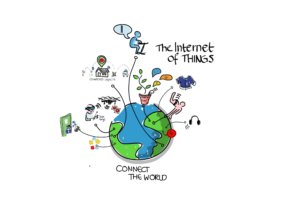Exploring the Metaverse A Beginner’s Guide to Virtual Worlds
Exploring the Metaverse: A Beginner’s Guide to Virtual Worlds
The metaverse, a vast and evolving digital realm, is rapidly capturing the imagination of people worldwide. From interactive gaming experiences to virtual shopping malls, this new frontier offers unprecedented opportunities to connect, engage, and experience the world in new ways. However, navigating this complex and sometimes confusing landscape can be challenging for newcomers. This guide aims to demystify the metaverse, providing a foundational understanding for exploring this exciting new digital frontier, addressing common questions, and identifying potential pitfalls.
This beginner’s guide to virtual worlds is structured as follows:
1. Defining the Metaverse
2. Navigating Different Metaverse Platforms
3. Understanding Immersive Experiences and Applications
4. Exploring the Social Landscape of Virtual Worlds
5. The Future of Virtual Interaction and its Applications
6. Potential Challenges and Future Considerations
7. FAQ: Common Questions and Answers
1. Defining the Metaverse
1.1 Understanding the Basic Concept
The metaverse isn’t a single platform, but rather a collection of interconnected virtual spaces. Think of it as a convergence of virtual reality (VR), augmented reality (AR), and the internet itself, creating immersive digital environments where people can interact, socialize, and participate in various activities. A critical element is the concept of persistent presence – users can virtually inhabit these environments and carry their digital identity and actions across different platforms, unlike traditional online experiences.
1.2 Key Characteristics of the Metaverse
Key characteristics include persistent presence, interoperability, and the ability to bring together diverse activities, from socializing and playing games to working and shopping. While the full potential of the metaverse is yet to be realized, it holds the promise of creating entirely new experiences.
1.3 Early Examples of Metaverse Platforms
Examples of early platforms include Decentraland, Roblox, and Sandbox, each with its own unique features and designs, showcasing different aspects of the concept. Some are gaming-focused, while others are designed for broader interactions. A critical difference lies in the level of interoperability between these platforms; this is a key area of ongoing development.
1.4 Common Misconceptions about the Metaverse
It’s crucial to separate the metaverse from simple video games or virtual reality experiences. While these elements play a role in the metaverse, the metaverse envisions a more comprehensive digital ecosystem where different aspects can seamlessly interact.
2. Navigating Different Metaverse Platforms
2.1 Choosing the Right Platform
With numerous metaverse platforms emerging, selecting the right one depends on your specific interests. Gamers might gravitate towards platforms like Roblox and Fortnite, while social interaction might be prioritized on platforms designed for community building. Consider your goals and preferences when deciding where to start your metaverse journey. For example, the decentralized metaverse offers unique opportunities for creators and users to have more control over their content.
2.2 Comparing Features and Functionality
Different platforms offer varying features and functionalities, catering to various needs. Some prioritize gaming experiences, while others focus on socializing and virtual commerce. Understanding the differences between these platforms is essential to find the most suitable one. A fundamental feature in some platforms is the concept of user-generated content, allowing individuals to create their own virtual spaces and experiences.
3. Understanding Immersive Experiences and Applications
3.1 Exploring Virtual Environments
Virtual environments within the metaverse allow users to explore vast digital landscapes, meet other users, and participate in a wide range of activities, from attending virtual concerts to shopping in digital stores. These experiences provide a unique perspective on how humans interact with technology. Consider the use of VR and AR as pivotal components to fully immerse yourself in these environments.
3.2 Exploring Applications Across Industries
The metaverse is not limited to entertainment; it has potential applications across many industries, including education, healthcare, and business. Think about virtual training simulations for healthcare professionals or virtual conferences connecting global audiences. A key benefit of using virtual spaces is the potential for faster and more efficient interactions.
3.3 The Role of Virtual and Augmented Reality
Virtual reality (VR) and augmented reality (AR) technologies are fundamental to the metaverse, creating realistic and immersive experiences. VR allows users to step into entirely virtual worlds, while AR overlays digital information onto the real world, blurring the lines between physical and virtual realities. The seamless merging of these technologies enhances user interaction in virtual worlds.
4. Exploring the Social Landscape of Virtual Worlds
4.1 Building Communities and Interactions
Virtual worlds foster communities and facilitate interactions between people with shared interests. Users can connect with others based on hobbies, professions, or aspirations in a virtual space. Community building in virtual environments is critical to the growth and development of these spaces.
4.2 The Impact of Virtual Interactions on Social Dynamics
Virtual interactions are evolving social dynamics and prompting new forms of expression. Explore how these new interactions are impacting people’s perceptions of communication and community. There’s much to learn about the long-term impact of these platforms.
4.3 The Role of Avatar Customization and Representation
Avatar customization provides opportunities to express personal identity and individuality within these virtual spaces. The role of avatars extends beyond mere representation; it plays a vital part in shaping how users interact with each other and with the virtual environment. A key aspect is the potential for creating diverse, inclusive communities.
5. The Future of Virtual Interaction and its Applications
5.1 The Evolution of Virtual Environments
The ongoing evolution of the metaverse is marked by improvements in technology, fostering increasingly realistic and immersive experiences. As the technology advances, the ability to experience virtual worlds from any location will likely become more commonplace.
5.2 Potential Applications and Industry Impacts
The metaverse’s impact on various industries is anticipated to be substantial, with potential applications in entertainment, education, healthcare, and even real estate. As more platforms emerge, we’ll see more opportunities to explore how these environments can improve our lives.
5.3 The Importance of Responsible Development
As the metaverse continues to evolve, the need for ethical and responsible development is paramount to prevent misuse or potential harm. A focus on inclusivity and accessibility will be crucial.
6. Potential Challenges and Future Considerations
6.1 The Issue of Digital Divide
The accessibility of metaverse platforms is crucial; ensuring inclusivity and affordability will be essential to overcome the digital divide and prevent further marginalization of certain populations.
6.2 Privacy Concerns in Virtual Environments
Privacy and security within virtual environments are paramount to protecting sensitive information and individual identity. User privacy and data security are fundamental to the success and acceptance of these environments.
6.3 Navigating the Complexities of the Metaverse
Understanding the complexities of the metaverse, its evolving nature, and its impact on society is crucial for effective navigation. It’s a constantly evolving space, requiring an ongoing understanding and adaption by users.
7. Frequently Asked Questions
7.1 What are some common pitfalls to avoid when entering the metaverse?
Newcomers to the metaverse should be cautious about sharing personal information and engaging with strangers. Be aware of potential scams and fraudulent activities, and prioritize your online safety.
7.2 How can I learn more about virtual worlds, and how can I get started?
Start by exploring introductory resources and guides. Explore different platforms and experiment with various activities. Many platforms provide tutorials and support options. Join online communities to discuss your experiences and learn from others.
7.3 What are the potential long-term impacts of virtual worlds on our society?
The long-term effects are yet to be fully understood, but some potential impacts include changes in social interactions, work patterns, and entertainment consumption. These changes will impact the way we interact with the physical and virtual world.
7.4 What are the current limitations of virtual worlds and how can they be addressed?
Current limitations include interoperability issues among platforms, the need for greater accessibility, and concerns regarding data security and privacy. Addressing these challenges will be crucial to expand their widespread adoption.
In conclusion, exploring the metaverse offers a fascinating glimpse into the future of virtual interaction and entertainment. While challenges remain, the metaverse’s potential to revolutionize industries and social experiences is undeniable. As the technology matures, continued exploration and responsible development will be crucial to unlocking its full potential. Ready to dive deeper into the digital realm? Explore the many virtual worlds available today! We encourage you to research and test different platforms, find your community, and embrace the possibilities that await.
Share this content:













Post Comment